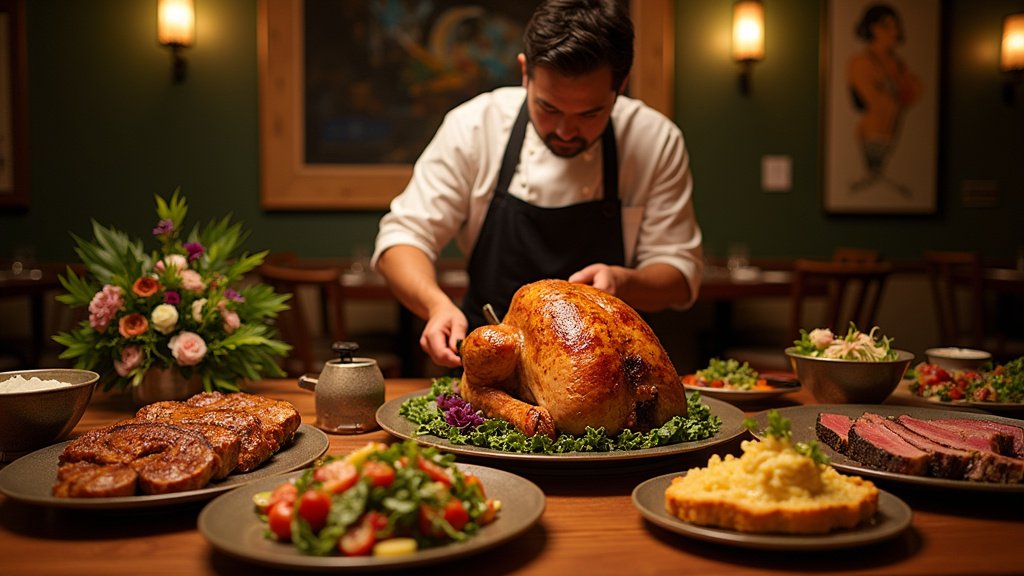When one thinks of Texas cuisine, the smoky allure of barbecue often takes center stage. However, the Lone Star State’s culinary landscape is a vibrant mosaic, reflecting a rich tapestry of cultural influences and regional specialties that extend far beyond the barbecue pit. As a devoted food critic and enthusiast, I’ve journeyed through Texas to uncover the diverse flavors that define its gastronomic identity.
Tex-Mex: The Heartbeat of Texas Cuisine
Tex-Mex cuisine stands as a testament to the harmonious blend of Texan and Mexican culinary traditions. This fusion, characterized by the liberal use of cheese, meats, and spices, has become a cornerstone of Texas dining. Dishes like enchiladas smothered in chili con carne, crispy chimichangas, and sizzling fajitas exemplify this flavorful marriage. The ubiquitous breakfast taco, a morning staple, showcases the versatility and widespread appeal of Tex-Mex fare.
German Influence: A Sweet and Savory Legacy
In the 19th century, German immigrants settled in central Texas, bringing with them a rich culinary heritage that has left an indelible mark on the region. Towns like Fredericksburg and New Braunfels are renowned for their German bakeries, offering treats such as strudels, pretzels, and kolaches—a pastry that has become a Texas favorite. These delicacies, alongside hearty sausages and schnitzels, highlight the enduring German influence on Texas cuisine.
Cajun and Creole Flavors: A Spicy Affair
The proximity of Texas to Louisiana has facilitated a flavorful exchange, introducing Cajun and Creole elements into the state’s culinary repertoire. In cities like Houston and Beaumont, one can savor dishes like gumbo, jambalaya, and crawfish étouffée, each brimming with spices and seafood. The annual crawfish boils, complete with corn and potatoes, have become a cherished communal event, celebrating this spicy heritage.
Vietnamese Cuisine: A Modern Fusion
The Vietnamese community in Texas, particularly in Houston, has significantly enriched the state’s food scene. Vietnamese restaurants offer a plethora of dishes, from the aromatic pho to the savory bánh mì sandwiches. The fusion of Vietnamese flavors with Texan ingredients has given rise to innovative dishes, such as crawfish seasoned with lemongrass and garlic, reflecting the dynamic evolution of Texas cuisine.
Farm-to-Table Movement: Celebrating Local Produce
In recent years, Texas has embraced the farm-to-table movement, with chefs and restaurateurs prioritizing locally sourced ingredients. This approach not only supports local farmers but also ensures freshness and sustainability. Farmers’ markets across the state, from Dallas to Austin, offer a bounty of seasonal produce, artisanal cheeses, and handcrafted goods, fostering a deeper connection between consumers and their food sources.
Seafood Delicacies: Gulf Coast Treasures
The Gulf Coast provides Texas with an abundance of seafood, leading to a variety of delectable dishes. From Galveston to Corpus Christi, seafood shacks and upscale restaurants serve fresh catches like red snapper, shrimp, and oysters. The tradition of the Texas shrimp boil, where shrimp are cooked with spices, corn, and potatoes, exemplifies the communal and flavorful nature of coastal dining.
Chili: The Official State Dish
No exploration of Texas cuisine would be complete without mentioning chili. Declared the official state dish, Texas chili is a hearty stew of meat and spices, notably devoid of beans—a point of pride and debate among Texans. Cook-offs and festivals dedicated to chili celebrate this beloved dish, highlighting its significance in Texas culinary culture.
Conclusion
Texas’ culinary landscape is a rich and diverse tapestry, woven from the threads of various cultures and traditions. Beyond the famed barbecue, the state’s cuisine offers a plethora of flavors and experiences, each telling a unique story of heritage and innovation. As a food critic and enthusiast, delving into these diverse culinary traditions has been a journey of discovery, revealing the depth and richness that define Texas’ gastronomic identity.






